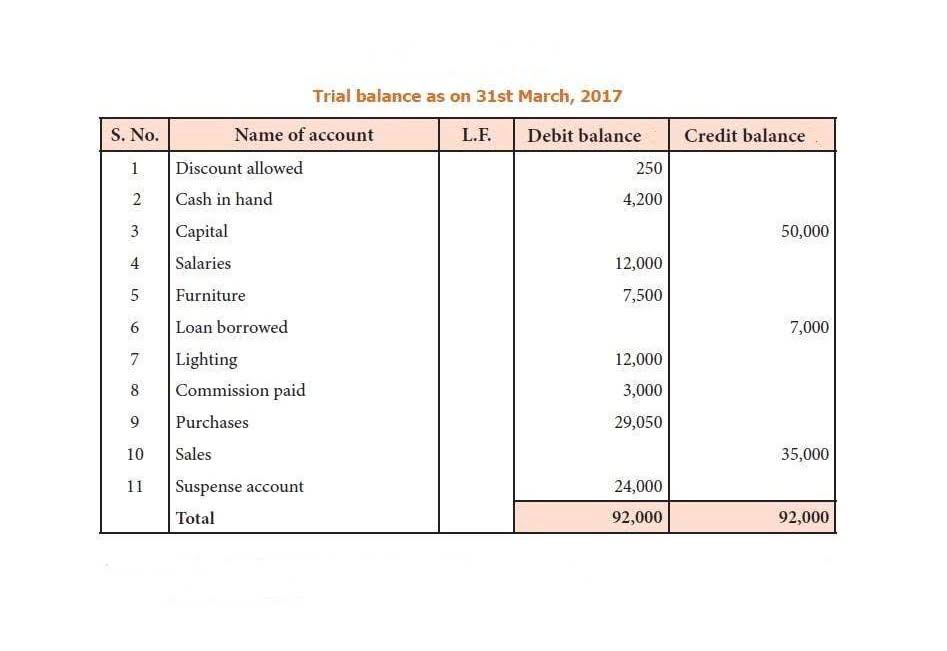
Currency from foreign countries must be translated to the reporting currency for financial reporting purposes. The conversion should normally provide results comparable to those that would have occurred if the business had completed operations using only one currency. Translation losses from the devaluation of foreign currency are not reported with cash and cash equivalents.
- The units of production depreciation method focuses on the units produced as its depreciation method.
- A firm should note instances of cash variances in a single, easily accessible account.
- Goodwill came in at $27.9 billion, which represents a slight year-over-year reduction from the $28.3 billion figure posted in the Q2 FY24.
- This step is critical, because it connects the changes in the numbers with actual events, decisions, and strategies at the company.
- During the day sales of 1,500 are entered into the register, and a cash count at the end of the day shows cash of 1,588 as summarized below.
Popular Double Entry Bookkeeping Examples
In contrast, when there is an overage, it is treated as income; thus retained earnings balance sheet we recorded on credit. Let’s assume Tom rang up a $100 pair of running shoes for $100, but he miscounted the cash received for the shoes. The accounting system will show $100 in sales but $101 of collections.

Unbreakable Certificate of Deposits
Assume that the company has a petty cash fund of $100 and its general ledger account Petty Cash reports an imprest balance of $100. Let’s now assume that when the petty cash fund is replenished, there is $6.00 on hand and there are $93.00 of petty cash vouchers. Short term is defined as current by accountants, so a current asset equals cash or an asset that will be converted into cash within a year. Inventory, for example, is converted into cash when items are sold to customers, and accounts receivable balances are converted into cash when a client pays an invoice.
Over and Short: Definition and What It Means in Accounting
We use data-driven methodologies to evaluate financial products and services – our reviews and ratings are not influenced by advertisers. You can read more about our editorial guidelines and our products and services review methodology. Founded in 1993, The Motley Fool is a financial services company dedicated to making the world smarter, happier, and richer. PwC refers to the US member firm or one of its subsidiaries or affiliates, and may sometimes refer to the PwC network. This content is for general information purposes only, and should not be used as a substitute for consultation with professional advisors. Investors need to be clear about whether a capital gain is on a short-term or a long-term asset because taxation of the gain or loss is treated differently.
- Both accounts receivable and inventory balances are current assets.
- This content is for general information purposes only, and should not be used as a substitute for consultation with professional advisors.
- Your job as an analyst is to connect the numbers to the real-world factors driving the business.
- This figure is used to measure a firm’s liquidity or its ability to pay its short-term obligations.
- The cash over and short account is used when an imprest account, such as petty cash, fails to prove out.
- A company can have too much cash or cash equivalents on hand, though.
- We use data-driven methodologies to evaluate financial products and services – our reviews and ratings are not influenced by advertisers.
Related AccountingTools Courses
If managers can effectively monitor short-term cash flow, the firm needs less cash to operate each month. Short-term assets or securities in investments refer to assets that are held for less than one year. In accounting, the term “current” refers to a short-term is cash short and over an asset asset, which means, expected to be converted into cash in less than one year, or a liability, coming due in less than one year. Because of the uncertainty regarding client creditworthiness, outstanding account receivable balances are not cash equivalents even if the invoice is due or shortly to be due. Even if a debt is ready for collection, there is no guarantee the client will be able to pay.

Any discrepancy should be debited or credited to an account called Cash Over and Short. The Cash Over and Short account can be either an expense (short) or a revenue (over), depending on whether it has a debit or credit balance. Cash is money in the form of currency, which includes all bills, coins, and currency notes. It also includes money orders, cashier’s checks, certified checks, and demand deposit accounts.

- If you bought a non-current asset for $10,000 and have written off $3,000 for depreciation, the current valuation of that non-current asset is $7,000.
- GOBankingRates works with many financial advertisers to showcase their products and services to our audiences.
- Investors need to be clear about whether a capital gain is on a short-term or a long-term asset because taxation of the gain or loss is treated differently.
- Cash equivalents include all assets that can quickly be turned into cash.
- If an investment matures in more than 90 days, it should be classified in the section named “investments”.
This cash shortfall is recorded as a debit to the cash over and short account (which is an expense) and a credit to the petty cash or cash account (which is an asset reduction). Businesses do not list the entire non-current asset’s value as an expense for accounting purposes. Instead, companies record each non-current asset’s depreciation and include that as an expense. Sometimes, the petty cash custodian makes errors in making change from the fund or doesn’t receive correct amounts back from users. These errors cause the cash in the fund to be more or less than the amount of the fund less the total vouchers. When the fund is replenished, the credit to Cash is for the difference between the established amount and the actual cash in the fund.
